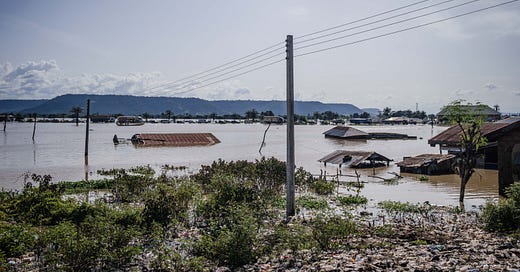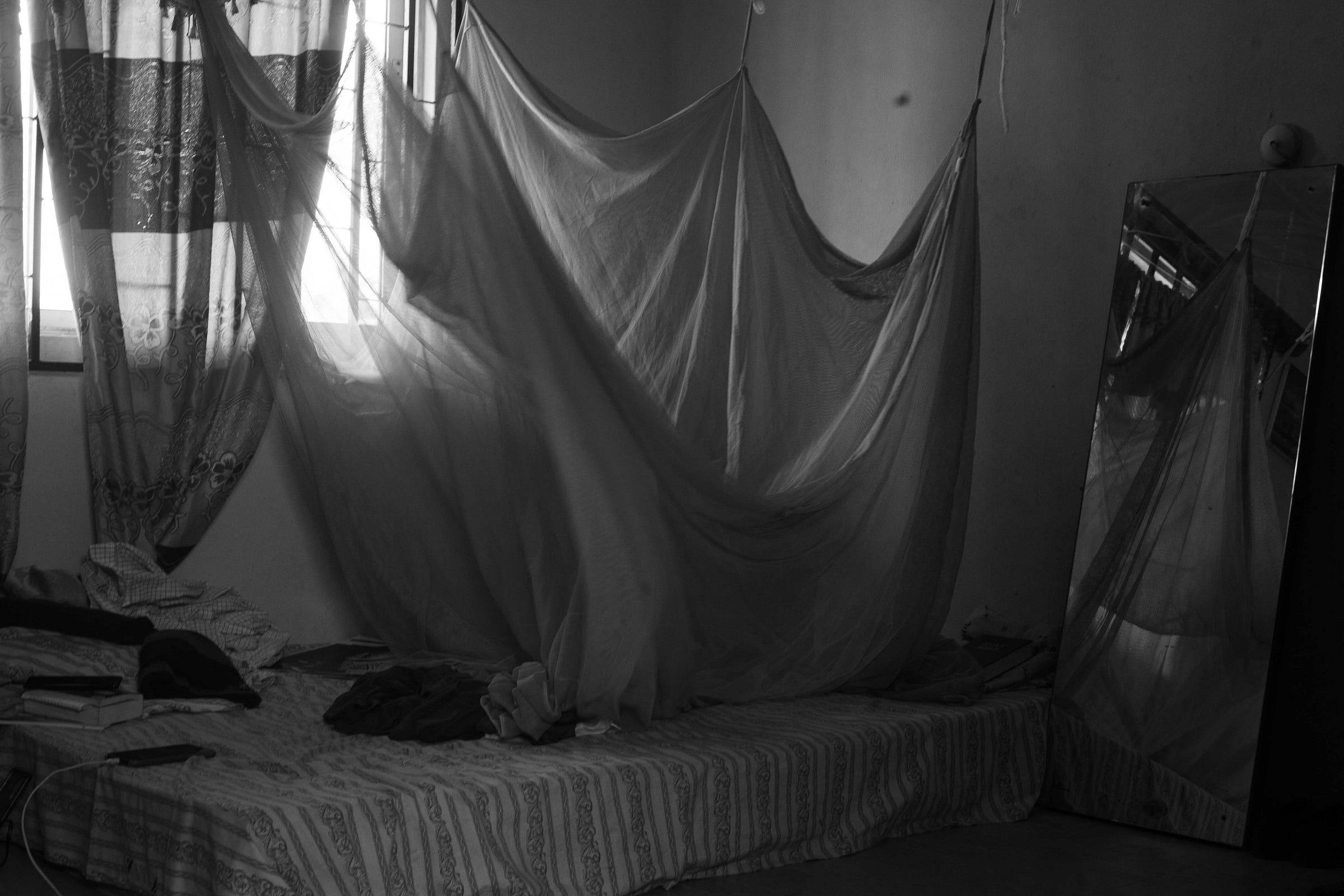From a certain point of view, the earth is a continuous spread of surfaces. In this regard, it is expanse, not depth or height, that matters. When this fact is applied to the presence of a large body of water, expanse becomes another word for “boundless.” And boundless water is also unfeeling, for even if these submerged houses are occupied, it would be outlandish to imagine the water pausing to measure the distance covered or the lives upended. The tragedy here is that water continues to flow.
Taiwo Aina: “We relate to each photograph differently.”
I was working on a flooding story. I went to Koton Karfe community in Kogi State: it’s a community close to the interstate bridge that links Kogi to Abuja. The water level rose and the community was flooded.
I passed through where the water was low so that I wouldn't drown, because I wasn’t with any protective equipment. I stood on a hill higher than the normal ground, so I was able to see how badly the community was affected.
I felt like it was going to be a great addition to the story I was working on, so I took the photograph showing the houses submerged in water, showing the road that cars are passing—as you can see water is almost up to the bridge. You can also see the cause of the problem which is the waste littered close to where I was standing.
I used a 35mm prime lens—I’m a prime lens shooter because they are always sharper—and a Fujifilm XT4.
I was telling a story of how climate change had affected the community. Part of that is the flooding the people of Koton Karfe experienced. We can see the houses submerged in the water, and also how people are adapting. So, the intentionality, my thought process, makes the photograph special to me. It’s just a complete photograph.
My approach to photography is to tell stories in documentary form. Most of my projects are from my curiosity, some are from issues happening that I really want to report about, some are about my personal life. My thought process varies, but it is still the same way I take my pictures. Sometimes I tend to conceptualize my ideas, like the project on celebrating women, which is on my website.
I think photography is impactful in a lot of ways. Firstly, I like to see photography as a form of artistic expression, whether you’re telling a documentary story, whether you are taking a portrait of a client, or whether you are taking a photograph of a product. It evokes feelings; we relate to each photograph differently; when you see a photograph now and then see it in the next 5 years, it gives you another message.
If you don’t see pictures you won’t tend to believe a story, so photography is a very great tool to raise awareness about an issue, when stories are properly told. And when awareness is raised, organizations can use the pictures to raise funds for the communities affected. Of course the people will be photographed in a way that is ethically acceptable. The funds will be used to get what the community needs. An impact is being made in that approach. For example, I got some funds to send to the people at Koton Karfe, and we have other people who have been raising funds with the photographs they took.
For me, photography is a way to creatively express myself. It helps my mental health; if I am bored and don’t know what to do, when I carry my camera, I feel whole again. For me and the subjects I photograph, it is impactful, and I think it is similar for most of the photographers I know.
Two other photographs by Taiwo Aina
About Taiwo Aina
Taiwo Aina is a visual storyteller and filmmaker based in Lagos, Nigeria. Her documentary stories and creative portraiture has been published frequently on Guardian UK, Anabelle Magazine, the Africa Report and Reuters. Her work on EndSARS has been exhibited in Colorado, USA and Foto Wien in Austria among others. See more of her documentation of the recent flooding in Nigeria in the Guardian. Keep up with her work through her website and Instagram.
Last Week — Nnebuifé Kwubeï
Nostalgia overwhelms me. That’s what a lot of my photographs are about. I am trying to reenact the memories and feelings I had before my grandmother's passing. I hadn’t started taking photographs or writing then. Ekene in this photograph is a memory place, a reminiscence, a familiar feeling, a warm welcome and a caring calloused hand repeatedly rubbing my head. Ekene is a reminder of what it felt like. Any time we converse in that familiar language, I always remember to be nostalgic.
Read More: Azonim (I Did Not Forget)
Support TENDER PHOTO
This is the 43rd edition of this publication. The newsletter can also read on web (best for viewing images), and via the Substack iOS/Android apps. My goal is to set up conversations with the work of early to mid-career African photographers. Learn more about the publication by browsing the archive or following on Instagram.








Maybe because of the title 'After the Fall', each photograph represents the move from vertical to horizontal. The poles standing in the first photograph seem to be on their way to vertical, the woman is half vertical, half horizontal, and the bed is the icon of the vertical. There is obviously the question of the difference between fall and rest, if any.